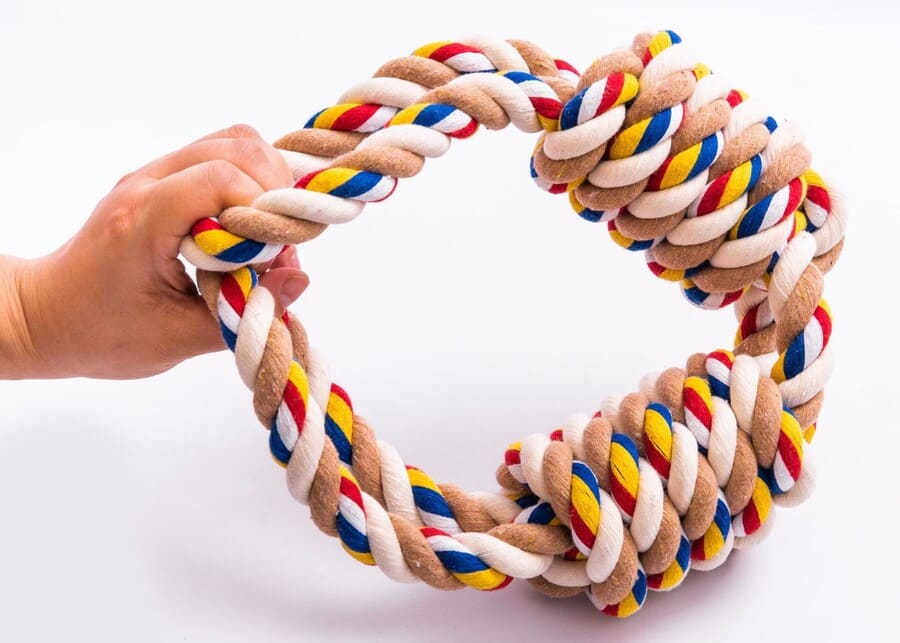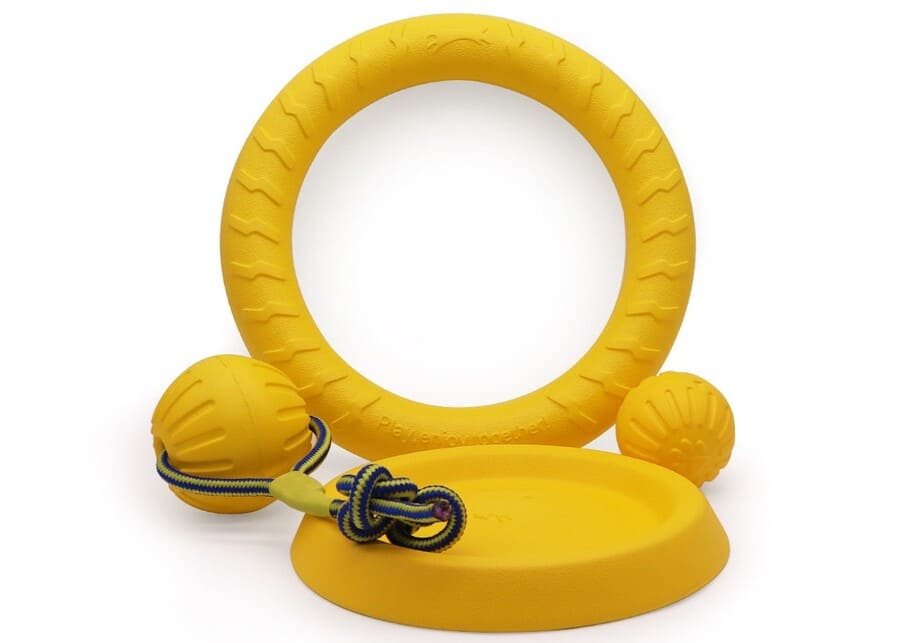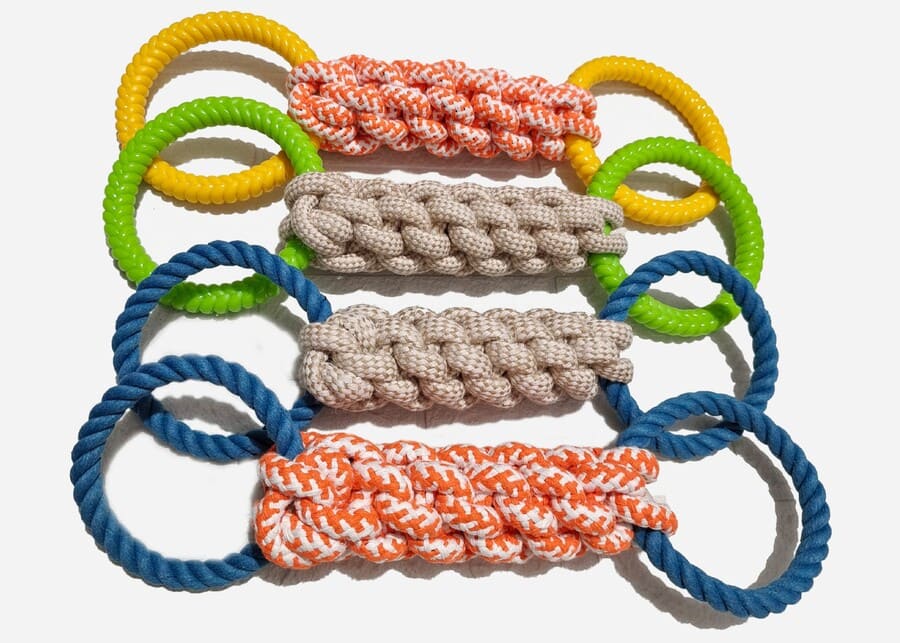Struggling to keep your dog engaged during training? It feels frustrating when they lose focus. The right toy can make training fun and effective for you both.
The best dog training toys are interactive tools that motivate your dog. These include puzzle toys for mental stimulation, reward toys for commands, and fetch toys for physical exercise. Choosing the right one depends on your training goal and your dog’s unique personality and needs.
Using toys in training has completely changed how I connect with dogs. It’s not just about giving them something to chew on. It’s about creating a language between you and your pet, where the toy is a key part of the conversation. When you find that perfect toy, you see a light switch on in their eyes. Suddenly, learning isn’t a chore; it’s the best game in the world. This guide is built on over a decade of experience in manufacturing pet supplies and seeing what truly works for brands and their customers worldwide. Let’s dive into finding that perfect toy for your training needs.
What makes a dog toy effective for training purposes?
Tired of toys that your dog ignores after five minutes? It’s a waste of money and a missed training opportunity. An effective toy holds their attention and rewards good behavior.
An effective training toy motivates your dog by tapping into their natural instincts. It should be highly engaging, durable enough for repeated use, and rewarding, either through treats, sound, or the simple joy of play with you. It becomes a tool for positive reinforcement.

When we design or source toys for our clients, we focus on three core elements that make a toy a powerful training aid. It’s a formula I’ve seen work time and time again.
Tapping into Natural Drives
An effective toy speaks to a dog’s instincts. A snuffle mat engages their desire to forage for food, while a flirt pole triggers their prey drive. The toy isn’t just a plastic object; it’s a stand-in for an activity their ancestors did in the wild. This intrinsic motivation is far more powerful than just trying to get them to do something for a treat. The toy itself becomes part of the reward. We helped one client develop a plush toy that mimicked a pickleball paddle. The dog owners were pickleball players, and their dogs loved chasing these soft, durable paddles. It connected the owner’s passion with the dog’s play drive, making training and bonding effortless.
Creating High-Value Association
A training toy should be special. It’s not a toy that lies in the toy basket all day. You should bring it out only for training sessions. This exclusivity builds anticipation and makes the dog want to work for it. I always advise clients to tell their customers to make the training toy a high-value item. When the dog sees that specific tug toy or puzzle feeder, they know it’s time for a fun, engaging session with their favorite person. This simple trick increases focus and makes the dog eager to learn whatever you’re teaching.
Durability for the Job
A training toy will see a lot of action. It needs to be built to last. It must withstand excited chewing, pulling, and tossing. A toy that falls apart after one session is not only a waste of money but can also be dangerous. We focus on reinforced seams for plush toys and strong, non-toxic rubber for chew and fetch toys. The toy’s durability ensures it can be a consistent part of your training routine for a long time.
How do training toys differ from regular dog toys?
Do you just grab any toy for training? This can send mixed signals to your dog and slow down your progress. Using a specific toy for training creates a clear purpose and better results.
Training toys are tools with a specific purpose, often used interactively with you to teach a behavior. Regular toys are typically for self-entertainment or comfort. Training toys are associated with learning and rewards, while regular toys are for casual play.
The line between a training toy and a regular toy is all about intent and function. I’ve worked with many brands to help them develop product lines that serve both purposes, and the distinction is critical for marketing and for the end-user’s success. A regular toy is for the dog to entertain themselves when they are bored. A training toy is a device for communication between you and the dog.
Think of it like tools in a toolbox. A hammer and a screwdriver are both tools, but you wouldn’t use a hammer to turn a screw. It’s the same with dog toys.
Here’s a simple breakdown I often share with clients:
| Feature | Training Toys | Regular Toys |
|---|---|---|
| Primary Purpose | To teach or reinforce a specific skill (e.g., recall, sit, problem-solving). | To provide comfort, self-amusement, or satisfy a chew instinct. |
| Typical Usage | Interactive and supervised, used in short, focused sessions with the owner. | Often used by the dog alone, available for casual play anytime. |
| Dog’s Association | "Work," learning, and earning a high-value reward. | Downtime, relaxation, and independent fun. |
| Examples | Puzzle feeders, treat-dispensing balls, tug toys used for rewards, clickers. | Squeaky plushies, chew bones, comfort toys for the crate. |
A client of mine, a professional dog trainer, only used a specific, brightly colored plush toy for recall training. The dogs in her class never saw that toy outside of those sessions. When she brought it out, their excitement was immediate. They knew that coming back when called meant they got a chance to play with that special toy. It was far more effective than just yelling "Come!" because the toy had a single, powerful meaning.
Which types of dog training toys work best for different behaviors?
Is your training hitting a wall? Using the wrong tool for the job can be the problem. Matching the toy to the training goal is the key to unlocking your dog’s potential.
For obedience like "sit" or "stay," use high-value reward toys like a special ball or tug toy. For mental stimulation, use puzzle feeders and snuffle mats. For physical conditioning and recall, use fetch toys like frisbees or balls.

Over the years, I’ve seen that the most successful pet product brands offer a range of toys designed for specific training outcomes. It’s not about having one "magic" toy. It’s about having the right toy for the right job. You need to match the product to the training goal.
For Obedience and Foundational Commands (Sit, Stay, Come)
When you’re teaching basic commands, the toy is the paycheck. You need something the dog wants badly enough to work for. A high-value reward toy is perfect here. This could be a specific tug toy that you only play with after a successful "stay," or a squeaky ball that you throw after a perfect recall. The idea is that the toy is an immediate, exciting reward for a job well done. It’s more engaging than just a dry biscuit for many dogs. The key is that the fun happens with you, strengthening your bond.
For Mental Stimulation and Problem-Solving
A bored dog is often a destructive dog. This is where puzzle toys, treat-dispensing balls, and snuffle mats shine. These toys are designed to make your dog think and use their brain. They have to figure out how to roll the ball, lift the flap, or nudge the slider to get their reward. This is incredibly enriching and helps build confidence. I recommend these for indoor use, especially on rainy days or when the dog needs to be left alone for a bit. It channels their mental energy into a positive activity instead of chewing on your shoes.
For Physical Exercise and Agility
To train your dog’s body and burn off excess energy, you need active toys. Frisbees, tennis balls, and ball launchers are classic for a reason—they work. They encourage running, jumping, and chasing, which are great for cardiovascular health. These toys are also fantastic for practicing commands like "drop it" and "fetch." They are best used outdoors in a safe, open space. I once worked with a client to design a durable, soft-edged frisbee for a brand targeting active, urban dog owners. It was a huge hit because it was safe to use in parks and great for building a dog’s stamina and focus.
What safety features should you look for in dog training toys?
Worried your dog might swallow a piece of their toy? It’s a scary thought for any pet owner. Choosing safe, durable toys gives you peace of mind during training and play.
Look for non-toxic, food-grade materials like natural rubber. Ensure the toy is the right size for your dog to prevent choking. Check for durable construction with no small, easily detachable parts that could be swallowed. Always supervise interactive play.

As a manufacturer, safety is the number one conversation I have with every client, from large supermarket chains to independent brand owners. A toy is useless if it’s dangerous. When we evaluate or design a product, we have a strict quality assurance checklist. This is what you, as a buyer or brand owner, should be looking for.
Material and Composition
The first question is always: "What is it made of?" Since dogs use their mouths to play, the materials must be non-toxic. We insist on strict raw material control from our suppliers.
- Good choices: Natural rubber, BPA-free plastics, durable and non-toxic fabrics like cotton or heavy-duty nylon.
- Things to avoid: Brittle plastics that can shatter into sharp pieces, toys with toxic paints or dyes, and soft vinyl that can contain harmful chemicals like phthalates.
Size and Shape
The toy must be appropriate for the dog’s size and breed. This is a critical safety feature that prevents choking or intestinal blockages.
- Rule of thumb: The toy should be large enough that it cannot be swallowed whole or fit entirely in the back of the dog’s mouth.
- Balls: A ball must be too large to pass through the dog’s throat.
- Chew Toys: They should be large enough that the dog can’t get the entire thing in their mouth.
Construction and Durability
How the toy is put together is just as important as what it’s made of. A poorly constructed toy can fall apart and create a hazard.
- Plush Toys: Look for reinforced stitching and embroidered details instead of plastic eyes or noses that can be chewed off and swallowed.
- Rubber Toys: They should be made of solid, durable rubber, not hollow with a squeaker that can be easily punctured and removed.
- Rope Toys: Ensure the fibers are natural and won’t cause harm if small amounts are ingested, though you should always discourage your dog from eating them.
Supervision is the final, crucial layer of safety. No toy is 100% indestructible. Interactive training toys, especially, should be used under your watch and put away after the session.
Conclusion
Choosing the right training toy involves matching it to your goal, your dog, and strict safety standards. This simple approach turns playtime into productive, fun learning sessions for you both.
As a leading manufacturer with over a decade of experience, we at Preeminent understand what makes a pet product successful. We partner with global brands, wholesalers, and retailers to bring high-quality, innovative, and safe pet supplies from concept to reality. Whether you need an OEM/ODM solution for a unique training toy or a reliable one-stop sourcing partner for your business, we are here to help you grow. Our commitment is to quality, safety, and your brand’s success.


